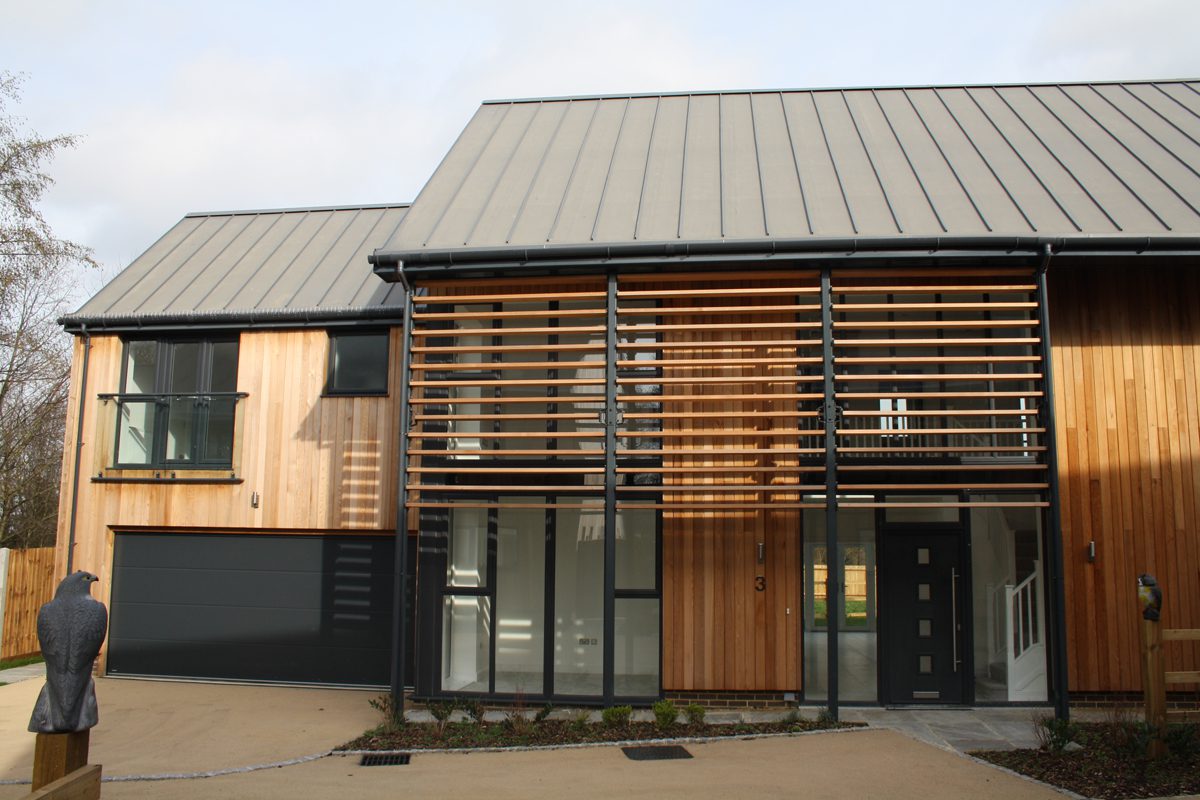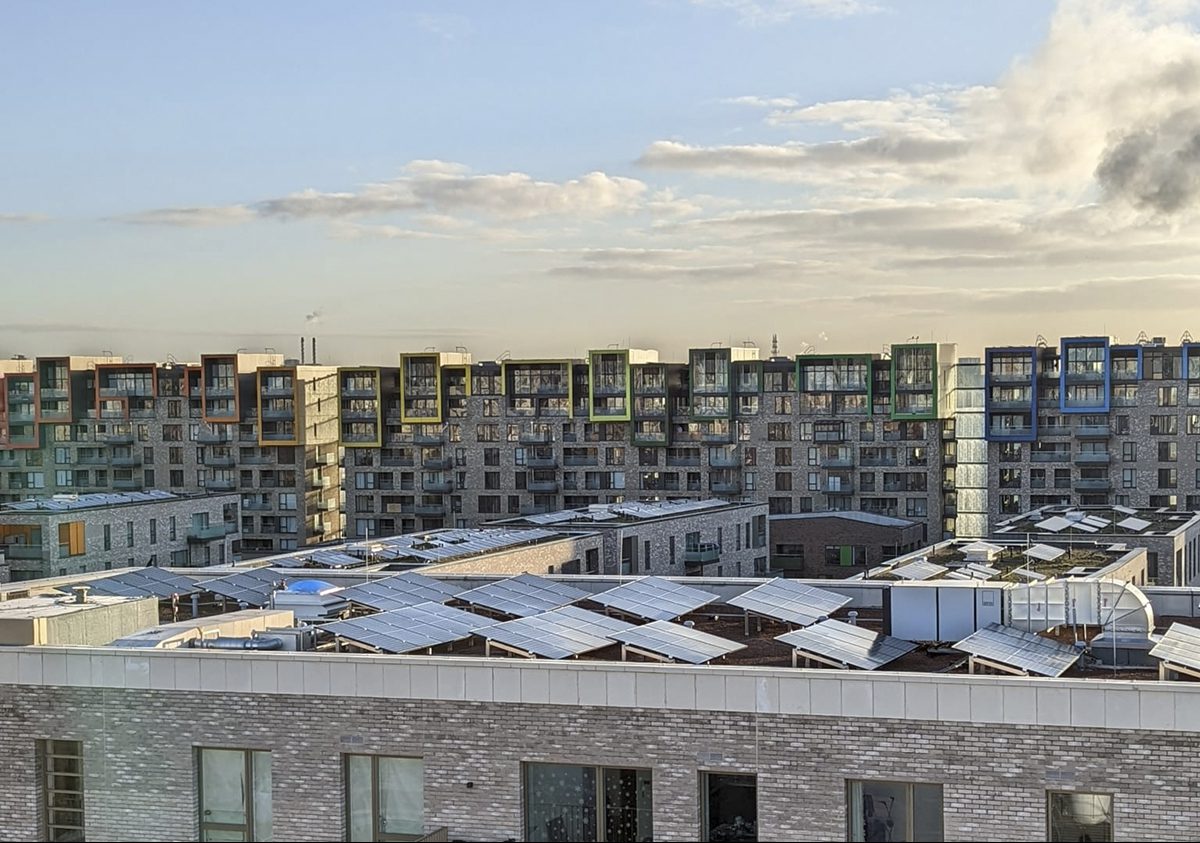Ross Finnie, Sales Director at SIG Design and Technology, discusses best practice for roofing guarantees with Architecture Today’s Technical Editor John Ramshaw.
In association with![]()
IKO Armourplan P Reinforced roof at West Motney Way, Rainham, Kent (ph: AJ Lucas Roofing Contractors)
As any architect will tell you, construction is a risky business where errors and failures – whether individual or cumulative – linked to detailing, installation, materials or systems can have profound consequences for the short and long term success of building projects. This is particularly true of roofs, which always require rigorous design, considered product specification, and careful assembly by trained subcontractors if they are to provide long lasting protection from the elements.
Beyond this, roofing guarantees are frequently sought to provide additional peace of mind. Sadly, it is only when things go wrong that shortfalls in the guarantee are exposed, often revealing shifting liabilities and protracted, adversarial resolutions. So what can specifiers do protect themselves and their clients? What kind of cover do they need for their designs? And what should be done with regards to due diligence? Ross Finnie, Sales Director at SIG Design and Technology, answers these questions and more with Architecture Today’s Technical Editor John Ramshaw.
SIGA 112s from SIGA Natural Slate’s Excellence range at St James Park, Didsbury (ph: SIGA)
What types of insurance are available?
There is public liability insurance, which covers the legal liability to third parties for bodily injury, damage to property and direct consequential losses (excluding products). Product liability insurance, covers the legal liability to third parties for bodily injury, damage to property, and direct consequential losses arising out of the products sold/supplied/installed. It is worth noting that the replacement cost of the defective product itself is excluded.
Insurance backed guarantees fulfil the written guarantee of the manufacturer/installer, should it cease trading. They can cover defective design, workmanship or materials – depending on the wording. Latent defects insurance protects against design workmanship or material defects after completion causing damage to the building. In most cases, this ensures that the policy holder can go directly to the insurer rather than to individual parties. Some policies may have an initial guarantee period where the contractor is still responsible, during which insurers provide insolvency cover only.
elZinc Rainbow roof from SIG Zinc & Copper (ph: Terence Smith)
How should specifier approach roofing guarantees?
First and foremost, specifiers should carefully consider what it is they want to cover. For example, some roofing guarantees only cover products/materials, while others may extend to design, installation, workmanship, or all of the above. If required, cover for latent defects or insolvency should always be requested, rather than automatically assumed that it’s part of the policy.
What type of insurance is best to minimise risk?
Clients and specifiers are increasingly requesting insurance-backed guarantees as a way of reducing the risk. But this alone is not enough: they will need to see the wording of the manufacturer’s and/or contractor’s guarantee, and the detail of the policy behind it to assess if the cover is appropriate. All too often, specifiers and clients don’t really know exactly what is being covered because it isn’t clearly defined, and they haven’t asked enough questions to find out. They are different types of cover available, ranging from product guarantees to latent defects insurance, but wordings vary depending on the insurance company.
IKO Armourplan P single-ply membrane roof at Arnold Hill Academy in Nottingham by IID Architects (ph: SIG)
So what is the best course of action for understanding what is, and what is not, covered?
Always seek additional information on the insurance being offered from an independent adviser who is Financial Conduct Authority (FCA) regulated. They will be able to offer clarity on what the various insurance policies that could apply actually cover. It also worth considering and discussing various scenarios where cover may be needed, including worst cases, to again ensure adequate cover is being provided.
Independent advice can be particularly important when assessing a product guarantee from a manufacturer. It is worth asking an FCA-regulated adviser to analyse what is covered if the product is faulty. For example, does it cover just the replacement of the materials, or the whole cost of replacing the roof, including labour and access? Failure to ask the right questions at this stage may result in a lack of appropriate cover if and when the guarantee is needed.
SIG D&T and EGR SolarNature Scheme, BioDiverse version (ph: SIG, EGR)
What other due diligence is required?
It is important to undertake financial due diligence on the stability and credibility of the roofing manufacturer, designer and or installer. Questions to consider include, how long have they been trading? And do they have a good reputation within the industry? Some companies may not be financially stable enough to sustain lengthy insurance policies, and some policies may cease if the company stops trading.
Some guarantees appear to have insurance backing but make no mention of any insurer or the Financial Conduct Authority, which regulates the sale of insurance products. These will invariably be guarantee backed by the manufacturer only, which is of no value if they cease trading. Some manufacturers are actually agencies importing other products, which might simply fold if hit with a claim. The best advice is to always read the small print!
What about consequential loss?
Consequential loss can be considerable if it involves damage to equipment and relocation of building occupants and businesses caused by a leaking roof. It is therefore critical that the policy fully covers this aspect. Specifiers should also ascertain if the policy covers loss of earnings (due to lengthy remedial work), and how long resolution of a consequential claim is likely to take (it also might be covered by other policies, such as buildings and contents insurance).
Contact Details
For more information, please visit the SIG Design and Technology website.
Source: Architecture Today






